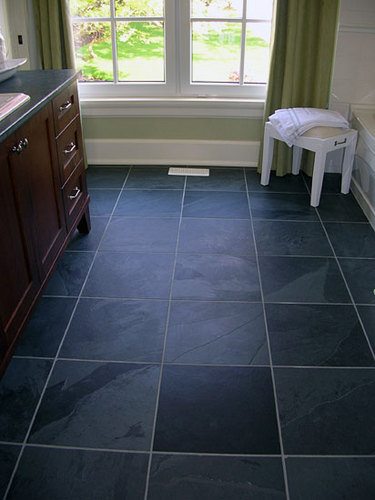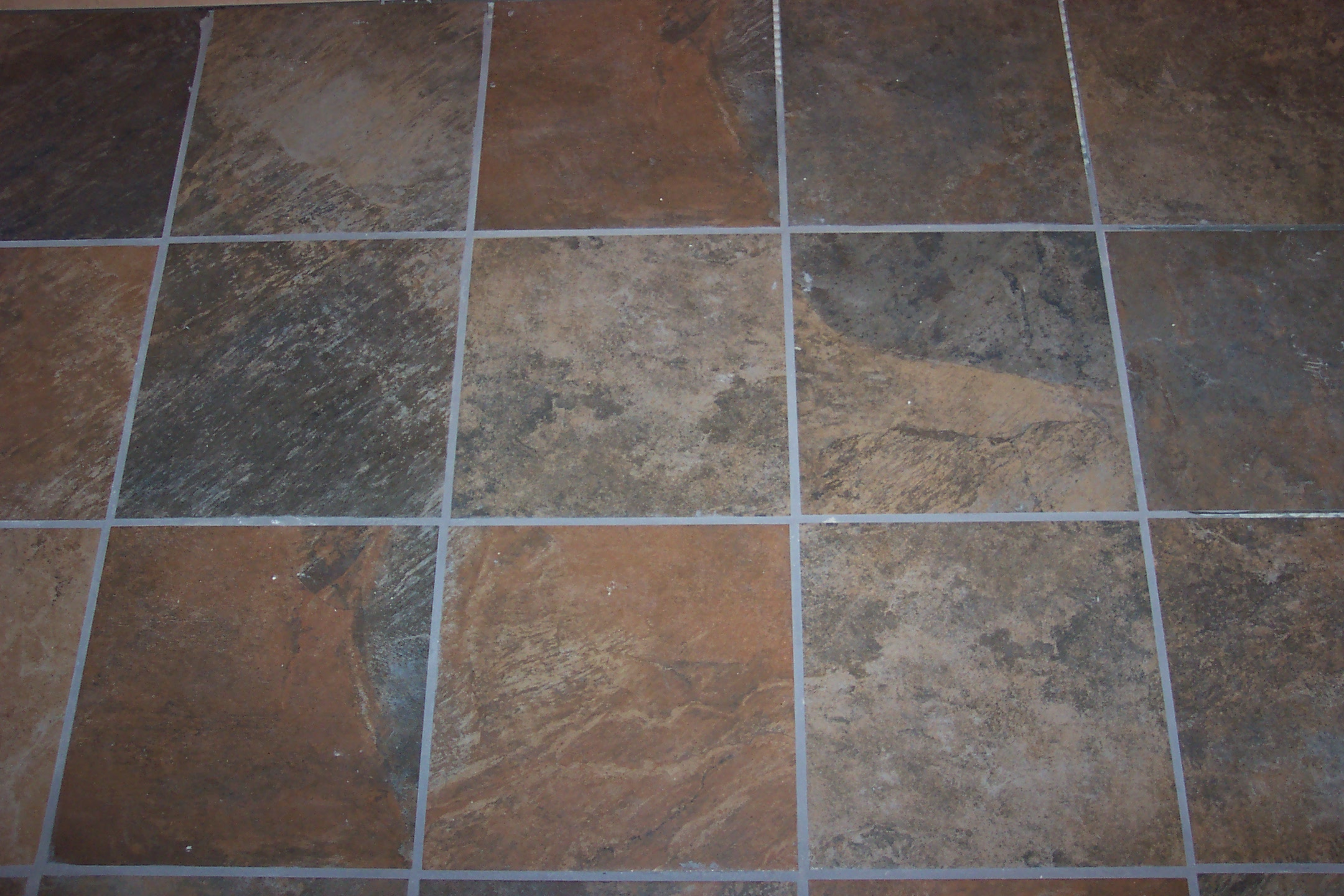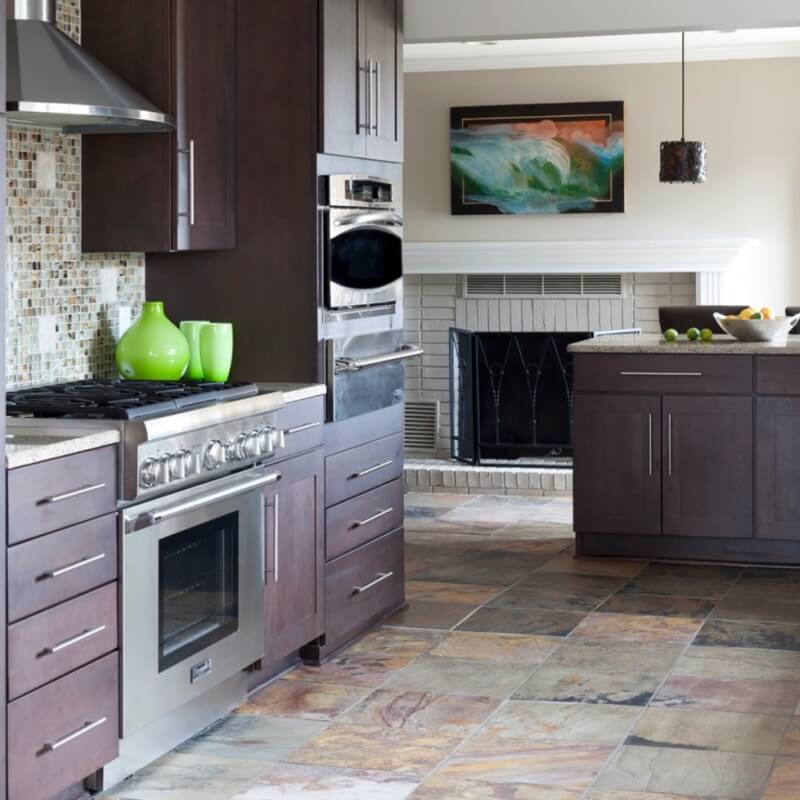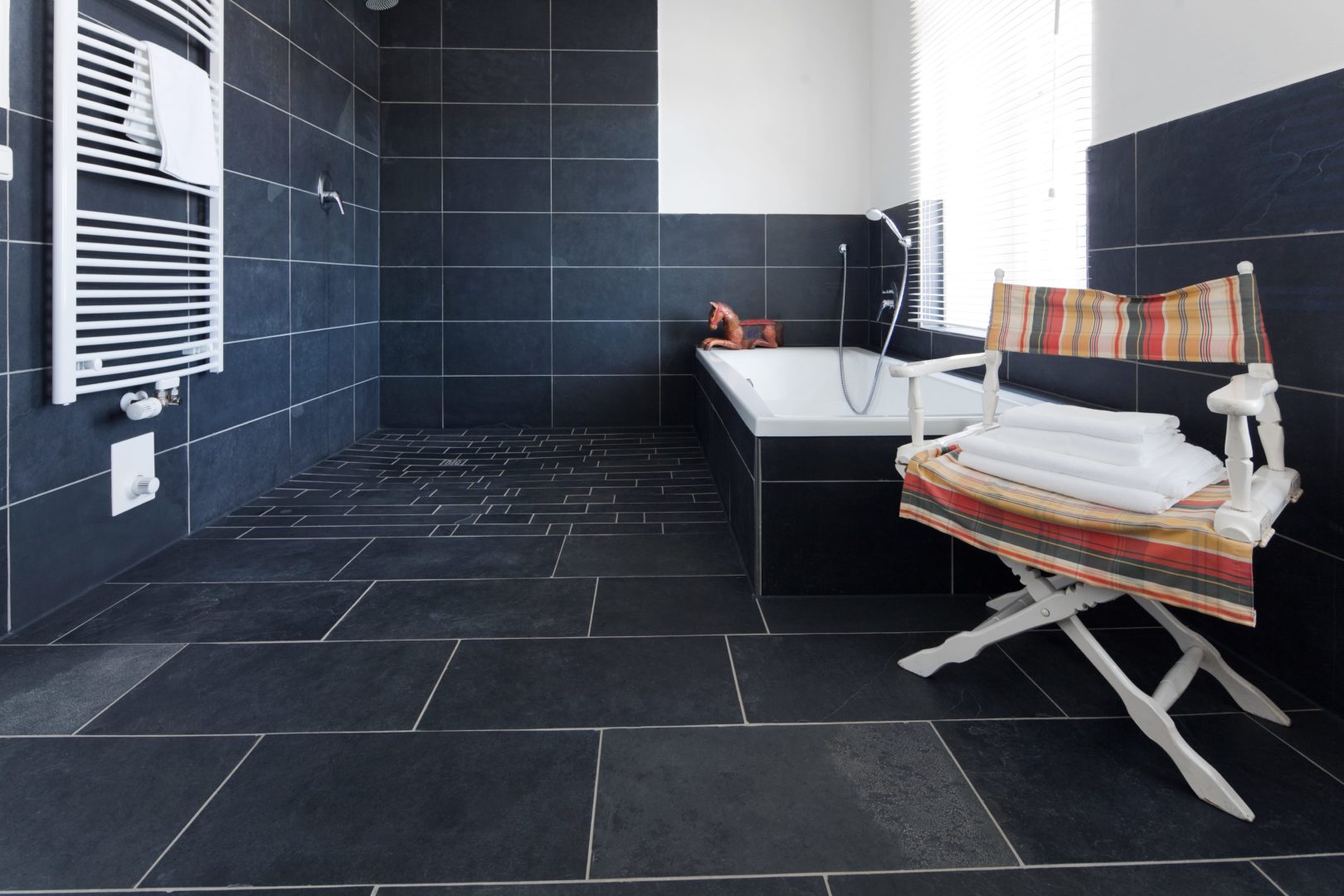When it comes to crafting the perfect kitchen, every detail counts – from the countertops to the cabinets. But let’s not forget one of the most crucial aspects that often goes unnoticed: the flooring. Today, I’m diving into the world of kitchen flooring and focusing on a material that’s been gaining attention lately – slate tiles. Join me as we unravel the unique qualities, advantages, practicality, and design considerations of using slate tiles for your kitchen floors.
The Unique Qualities of Slate Tiles
Imagine a kitchen floor that boasts the natural beauty of earth tones, textured surfaces, and an artistic play of colors. This is where slate tiles shine. Slate is a type of metamorphic rock, which means it’s born from the forces of heat and pressure that Mother Earth has to offer. The result? A visually intriguing material with an array of colors – from deep charcoal and rusty red to muted greens and blues. Each tile has its own personality, offering a distinctive and authentic touch to your kitchen.
Advantages of Using Slate Tiles in the Kitchen
The first thing I look for in any kitchen flooring is durability – and slate tiles don’t disappoint. They’re like the sturdy guardians of your kitchen, standing up to the hustle and bustle of daily life. Spills, dropped pots, and the pitter-patter of feet are no match for the durability of slate. Not only are they tough, but they’re also incredibly versatile. No matter if your kitchen is all about modern minimalism or rustic charm, slate tiles complement various design styles effortlessly. Plus, they’re not just tough; they’re naturally cool underfoot, making kitchen dance parties even more enjoyable.
Practicality in Kitchen Settings
One of the last things you want in a kitchen is a slippery floor – it’s a recipe for disaster. Luckily, slate tiles come to the rescue with their naturally textured surface. They’re like nature’s way of saying, “You’re safe here.” Spills and drips become mere inconveniences rather than accidents waiting to happen. Maintenance? It’s surprisingly hassle-free. Thanks to slate’s resistance to stains, a quick wipe with a damp cloth is often all you need to keep them looking brand new. And if you’re an eco-conscious soul, you’ll appreciate the fact that slate tiles come from the Earth with minimal processing – a small eco-footprint with a big impact.
Considerations and Potential Drawbacks
Now, let’s talk about the elephant in the room – slate’s porosity. It’s like a sponge in some ways, eager to absorb liquids if left unsealed. That’s where sealing comes into play. Think of sealing as giving your slate tiles a protective shield against stains. And speaking of protection, slate tiles have their quirks. Because they’re a natural material, each tile can be a little different in terms of thickness and surface texture. It’s like assembling a puzzle, and this is where professional installation comes in. Investing in experienced installers ensures a beautiful and even floor.
Design Considerations and Trends
The fun part of kitchen design – choosing colors and patterns! With slate tiles, it’s like having a palette of nature’s finest hues at your disposal. From warm browns to cool greys, you can select a shade that speaks to your kitchen’s personality. Feeling adventurous? Mix and match slate with other materials like wood, glass, or metal for a kitchen that’s uniquely yours. These combinations add depth and texture, making your kitchen a visual masterpiece.
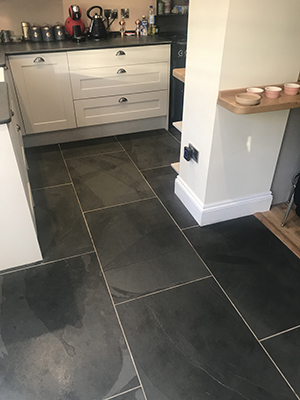
Installation and Maintenance Tips
If you’re going for slate tiles, consider professional installation a must. This isn’t a DIY adventure; it’s a job for the experts who understand the quirks of slate. Proper subfloor preparation is essential for a long-lasting result. And once your beautiful slate tiles are in place, don’t forget to seal them. It’s like giving them a long-lasting coat of armor against spills and stains. Regular maintenance involves simple cleaning routines – a sweep or a mop with a gentle cleaner will keep your slate tiles shining.
Real-Life Experiences and Testimonials
Don’t just take my word for it – let’s hear from homeowners who’ve embraced slate tiles in their kitchens. Mary from Seattle shares how her slate flooring has stood up to years of family gatherings and cooking experiments. “It’s like having a piece of nature indoors,” she says, “and the best part? It still looks fantastic!” These personal insights offer a glimpse into the satisfaction and practicality that slate tiles bring to real homes.
So, are slate tiles good for kitchen floors? The answer is a resounding yes, but like any decision, it’s important to weigh the pros and cons. The durability, unique beauty, and practicality of slate tiles make them a compelling choice for your kitchen. Just remember, professional installation, proper sealing, and regular care are the key ingredients for a kitchen floor that stands the test of time. With slate tiles underfoot, you’re not just upgrading your kitchen; you’re adding a touch of natural elegance to every meal, every memory, and every moment spent in the heart of your home.
Pros and Cons of Slate Flooring HomeAdvisor
Dou0027s and Donu0027ts – Caring for Your Natural Slate Flooring
When to Break the Rules Around Choosing White (or Cream) Trendy
3 Great Reasons to Install a Slate Tile Floor in your Home
Slate Tile is the Hot New Trend
Slate Kitchen Floor Tiles: Why They Work Tiles Direct
Pro u0026 Cons of Natural Slate Flooring Claude Browns
Tired Black Slate Kitchen Floor Renovated in High Wycombe – South
Related Posts:
